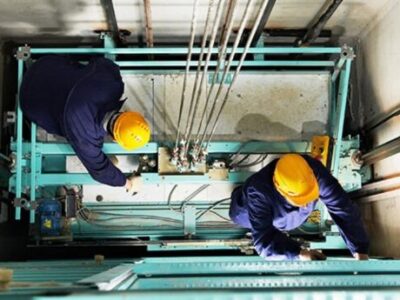Back pain can impact both your quality of life and your ability to produce while at work. Generally speaking, employers in California and throughout the country are supposed to take steps to prevent back and other injuries. Let’s take a look at a few reasons why back injuries occur on the job.
You don’t lift items properly
Ideally, you will lift objects using your legs instead of your back. Furthermore, it is important that you hold them close to your body while lifting or moving them. Your employer should hold training classes or provide other tools to ensure that you are using proper lifting techniques. Training classes or other safety tools can also be used to ensure that you don’t develop bad habits that could increase the risk of getting hurt.
You’re in a hurry to get a job done
When your focus is on getting the job done quickly as opposed to getting the job done safely, you may be at a greater risk of getting hurt. This is because you may neglect to use proper posture or take other shortcuts in an effort to complete a task in as little time as possible. Employers are encouraged to work with their employees to help keep them calm and relaxed whenever they are asked to lift or move heavy objects.
If you experience back injuries at work, you may be entitled to workers’ compensation benefits. The same may be true if you experience any other type of injury that was caused while performing tasks for an employer. An attorney may be able to help you obtain payment for medical bills or recoup a portion of wages lost while recovering from your injuries.
Understanding How Workplace Back Injuries Are Diagnosed
When you suffer a back injury at work, obtaining a proper medical diagnosis is critical for both your health and your workers’ compensation claim. Physicians typically start with a physical examination to assess mobility and pain triggers. Imaging techniques like X-rays, CT scans, or MRIs are often used to detect herniated discs, lumbar strains, or spinal nerve compression.
In some cases, you’ll be referred to an orthopedic specialist or a pain management clinic. Accurate and timely documentation of the diagnosis supports your case and ensures you’re receiving the right level of medical care and compensation.
What to Do If Your Workers’ Compensation Claim Gets Denied
Workers’ compensation claims can be denied for various reasons, including late reporting, incomplete documentation, or employer disputes. If your claim is rejected, you are legally entitled to challenge the decision in California.
Start by requesting a Qualified Medical Evaluator (QME), who provides an impartial medical review. Then file for a hearing with the California Division of Workers’ Compensation (DWC). Retaining a knowledgeable attorney can significantly strengthen your appeal by helping you compile evidence, manage deadlines, and represent your interests in hearings.
Ergonomic Solutions for Different Work Environments
Ergonomics plays a vital role in reducing the risk of workplace back injuries, but effective solutions vary across industries. Construction workers benefit from mechanical lifting devices and training in posture safety. For office employees, ergonomic chairs, adjustable desks, and regular movement breaks help mitigate posture-related injuries. In the healthcare field, where lifting patients is routine, staff should use assistive equipment and team-based lifting protocols to reduce strain.
Tailoring ergonomic practices to specific job roles enhances workplace safety and prevents long-term injuries that lead to productivity loss and compensation claims.
California Workers’ Compensation Law: What Employees Must Know
Under California Labor Code S3600, most employees are entitled to compensation for injuries sustained while performing job-related duties. This includes back injuries, whether from a single incident or cumulative trauma over time.
Workers must report their injury within 30 days and file a claim within one year. Once filed, employers must provide immediate access to medical care and report the claim to their insurance carrier. Missing key deadlines or documentation requirements can result in the denial of benefits, so it’s important to follow the legal process carefully.
Navigating the Medical System During Recovery
After a workplace injury, you’ll likely begin treatment within your employer’s Medical Provider Network (MPN). Physicians may recommend rest, physical therapy, chiropractic care, or pain management interventions. In more severe cases, a Functional Capacity Evaluation (FCE) may be required to assess your ability to return to work safely.
Your medical records will influence the level and duration of benefits you receive, including temporary disability, permanent disability, or vocational retraining if you’re unable to resume your previous job duties.
What to Do Immediately After a Workplace Back Injury
If you experience a back injury at work, take immediate action to protect your health and your legal rights. First, report the incident to your supervisor. Prompt reporting helps establish a clear timeline and ensures compliance with California workers’ compensation laws.
Next, seek medical attention and begin documenting your symptoms, limitations, and treatment. Keep all communications and paperwork organized these will be essential if you need to file a claim or contest a denial.
Trusted Resources for California Workers and Employers
For additional guidance, workers and employers can turn to reliable organizations. The California Division of Workers’ Compensation (DWC) provides forms, instructions, and contact information for filing and appealing claims. OSHA offers safety protocols and ergonomic best practices. Reviewing relevant labor codes also helps clarify legal obligations and rights for all parties involved.
Call to Action: Speak With an Experienced California Workers’ Compensation Attorney
If you’ve suffered a back injury at work, don’t navigate the legal and medical process alone. The right representation can make the difference between a denied claim and a full recovery of your benefits.
At Hussain & Gutierrez, we specialize in helping injured workers throughout California secure the compensation they deserve. We understand the complexities of back injury claims from initial filing to denied claim appeals.
Contact us today for a free consultation:
Let us handle the legal stress while you focus on healing.
Frequently Asked Questions (FAQs)
What types of back injuries qualify for workers’ compensation?
Workers’ compensation may cover a range of back injuries, including herniated discs, muscle strains, lumbar sprains, sciatica, and spinal cord compression. Both acute injuries and chronic, repetitive-use conditions may be eligible.
What happens if I miss the 30-day reporting window?
Missing the 30-day deadline to report your injury to your employer can jeopardize your ability to receive compensation. However, exceptions exist, especially in cases involving gradual injuries. Consult an attorney if you’re unsure.
Can I choose my own doctor for treatment?
In California, initial treatment usually comes from your employer’s Medical Provider Network (MPN). You may request a change within the MPN, and in some cases, you can predesignate your personal physician.
How long does it take to receive benefits?
Workers’ compensation benefits typically begin within 14 days of the insurance carrier receiving notice of your injury. Delays may occur if your employer or insurer disputes your claim.
Can I still receive benefits if I was partially at fault?
Yes. California’s workers’ compensation is a no-fault system, meaning you can receive benefits even if you contributed to the injury, as long as it occurred during the course of your employment.



